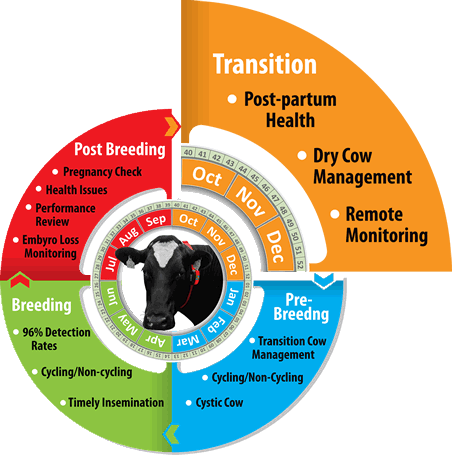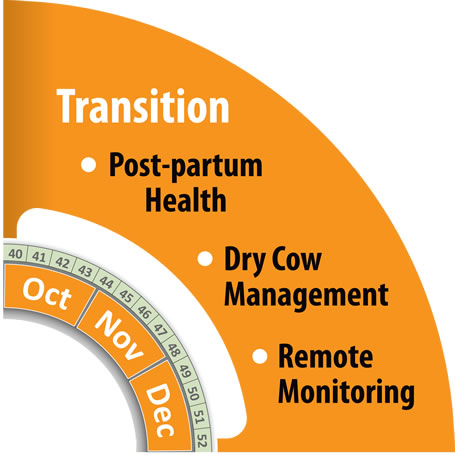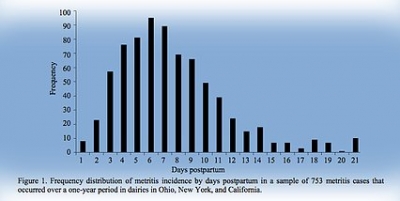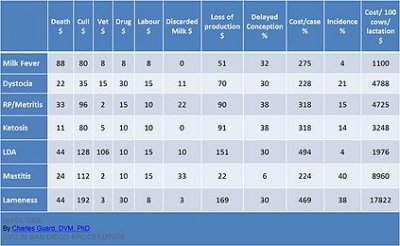TRANSITION PERIOD
The transition period 3 weeks before and after calving is a critical time in monitoring a cows health as this the period when a cow becomes most susceptible to disease. Herd management during this period is looking at reducing post calving disorders therefore early illness detection, early intervention as well as monitoring the effectiveness of treatment is critical.

“With not being in contact with my dry cows every day I had the peace of mind that HerdInsights was monitoring my dry stock, catching sick cows, when dry and after calving.” – John Herlihy, Limerick, Ireland. 80 collars
Key Focus Areas During This Period Include:
 Post-Partum Health
Post-Partum Health
The postpartum period of the dairy cow determines productive and reproductive responses during lactation and is therefore, a pivotal time in the production cycle of the cow.
30 – 50% of dairy cows are affected by some form of metabolic or infections disease around the time of calving. Early detection of cows which have health problems is an important goal, as all the available evidence shows that health and fertility are closely linked, with health problems precipitating widespread and often severe fertility problems which frequently follow on from each other in a vicious circle.
The transition period imposes a number of changes within the cow and as a result the stress levels of the cow are increased therefore the focus needs to be on detecting metabolic disorders such as: retained placentas, ketosis, metritis and displaced abomasums (DA).
How Can HerdInsights Help?
- Monitor individual cows resting, grazing and feeding behaviour
- Generate an individual cows health index
- Issue alerts to enable easy evaluation
For Further Information On Post-Partum Health Click On Headings Below
 Dry Cow Management
Dry Cow Management
The dry period includes the time between halting of milk removal (milk stasis) and the subsequent calving. Generally, 45 to 50 days is recommended. If less than 40 days, then milk yield in the next lactation will be decreased. [see Swanson 1965; Coppock et al. 1974; Dias and Allaire, 1982].
Dairy cows in the dry period are offered mineral and vitamin mixes in order to prevent issues associated with deficiency in both the cow and the calf. Some of these issues include retained foetal membranes (RFM), lazy calving, calving difficulty (dystocia), milk fever, calf death poor calf health, and other metabolic disorders.
How Can HerdInsights Help?
- Maintain accurate drying off and calving dates
- Resting time
- Feeding time
- Activity levels
For Further Information On Dry Cow Management Click On Headings Below
Remote Monitoring
Want To Monitor Heifers Off Farm?
 Concerned about the health status of your dry cows that you don’t see every day as they are off farm or out of range?
Concerned about the health status of your dry cows that you don’t see every day as they are off farm or out of range?
HerdInsights have developed a Remote Gateway which can be used to monitor your off farm livestock ensuring that you can still maintain 100% focus on each individual cow or heifer 24/7.
Our innovative solution enables you to breed your heifers remotely and offer you the peace of mind that your entire herds health status is being monitored, giving you back control of all your livestock – not just the ones you can see!



TESTIMONIAL
The system has sent me alerts for cows that have turned out to have mastitis and ketosis before I would have picked it up. It even monitors the cows feed intake which has proven to be great for picking up sick cows that are eating less.

 HerdInsights has 100% focus on each individual cows feeding, resting and activity behaviours and by combining these metrics to generate an individual cows specific health index sends an alert directly to the farmers phone.
HerdInsights has 100% focus on each individual cows feeding, resting and activity behaviours and by combining these metrics to generate an individual cows specific health index sends an alert directly to the farmers phone. Dry cow management is a key factor in the management of your dairy herd as management of animals during this period will determine how they perform throughout their subsequent lactation.
Dry cow management is a key factor in the management of your dairy herd as management of animals during this period will determine how they perform throughout their subsequent lactation.